A hardworking businessman, Captain Tom Ryman amassed a fortune in riverboats. Known as the Ryman Line, by 1885, a fleet of 35 riverboats provided the captain with a well-to-do lifestyle. Influenced by a popular preacher of the time, Captain Ryman put to the task of building a large auditorium. The $700,000 USD building, named the Union Gospel Tabernacle, was completed in 1892. Upon his death in 1904, the building was renamed in the honor of its builder. The painting of Ryman Auditorium shown above is hanging inside.
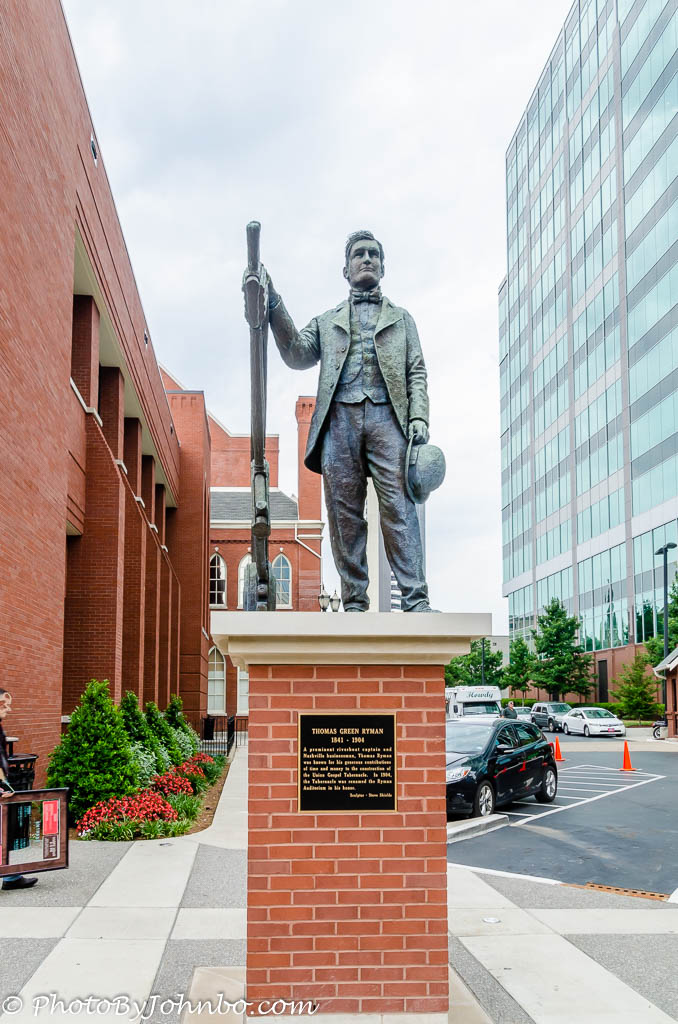 This statue of Captain Ryman stands outside the main entrance to the building. After the death of Thomas Ryman, the theater became a featured attraction in Nashville. Legendary entertainers of the day, sporting events, political debates and even livestock auctions were hosted regularly at the Ryman.
This statue of Captain Ryman stands outside the main entrance to the building. After the death of Thomas Ryman, the theater became a featured attraction in Nashville. Legendary entertainers of the day, sporting events, political debates and even livestock auctions were hosted regularly at the Ryman.
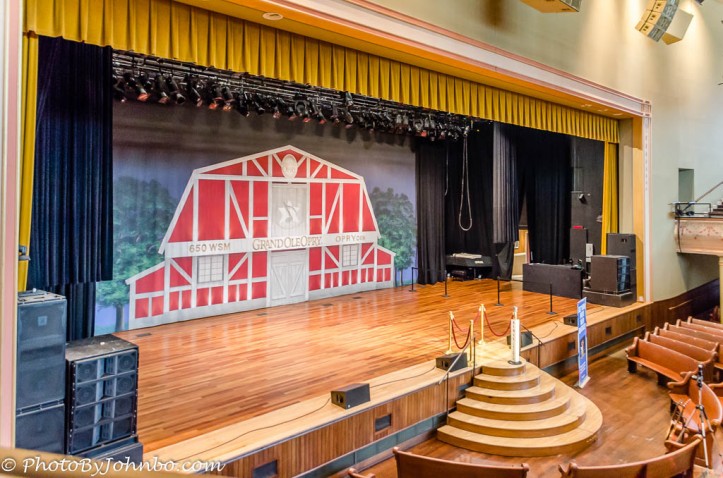 In 1925, a life insurance company started a radio program for the radio station they built, WSM. That program grew in popularity and eventually became The Grand Ole Opry. The musical program attracted a large radio and studio audience, eventually causing the program to move to ever larger venues. For 31 years, the Opry claimed Ryman Auditorium as its home. In 1974, Ryman hosted the last regular Opry program and the program moved to its current home at Opryland.
In 1925, a life insurance company started a radio program for the radio station they built, WSM. That program grew in popularity and eventually became The Grand Ole Opry. The musical program attracted a large radio and studio audience, eventually causing the program to move to ever larger venues. For 31 years, the Opry claimed Ryman Auditorium as its home. In 1974, Ryman hosted the last regular Opry program and the program moved to its current home at Opryland.
Several years ago, I visited the Ryman. At that time, it was relatively run-down and for a modest fee, one could wander at will around the stage and into backstage areas. At that time, there were no performances scheduled there anymore, so other than its historical significance, the place wasn’t much of an attraction. Today its a different matter. In addition to the tours that are offered daily, the venue has reopened to musical groups. It is again possible for people to hear music of all kinds emanating from the stage. In the foyer, statues of two of the most famous Opry stars are posed in a backstage moment. Roy Acuff and Minnie Pearl spent many years entertaining folks at the Ryman.
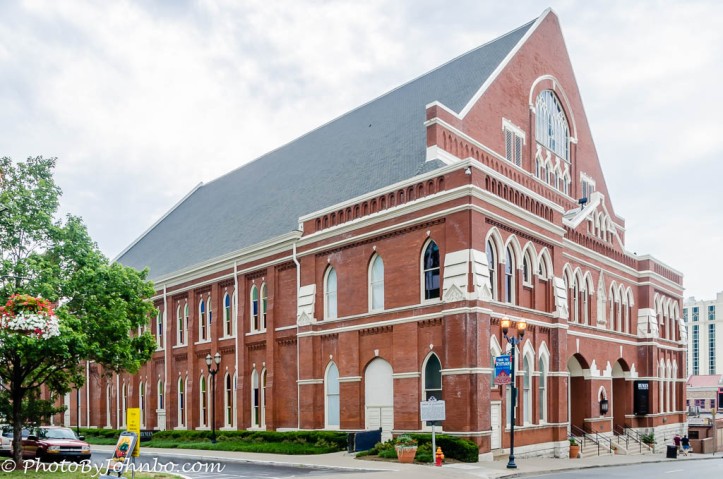 Ryman Auditorium was again the home of the Opry when their facility at Opryland was heavily damaged by flooding in 2010. My personal opinion of the museum tour is, frankly, not very good. For what you see in an hour or two of self-guiding, the price seems steep. In fact, were I to visit Nashville again, I would visit the Ryman in its best light. Instead of buying a museum tour ticket, I would spend a little bit more and attend one of the many live concerts held there. While I may not get to see as much, and have to deal with much larger crowds, being there for a performance seems like the best way to enjoy the Ryman.
Ryman Auditorium was again the home of the Opry when their facility at Opryland was heavily damaged by flooding in 2010. My personal opinion of the museum tour is, frankly, not very good. For what you see in an hour or two of self-guiding, the price seems steep. In fact, were I to visit Nashville again, I would visit the Ryman in its best light. Instead of buying a museum tour ticket, I would spend a little bit more and attend one of the many live concerts held there. While I may not get to see as much, and have to deal with much larger crowds, being there for a performance seems like the best way to enjoy the Ryman.
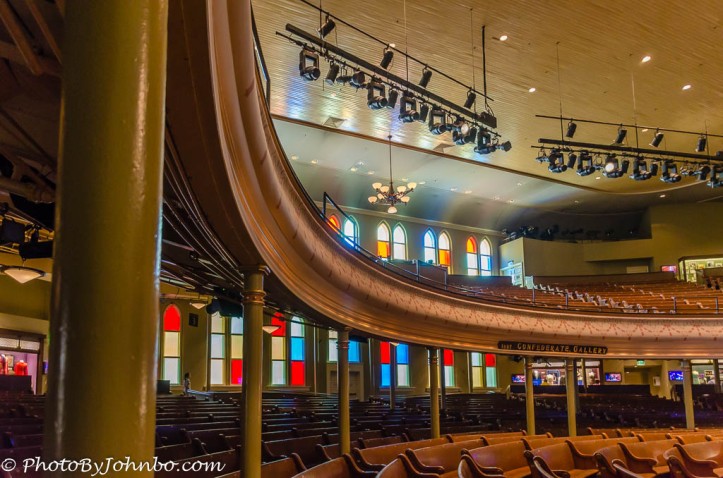 The tour starts with a multimedia presentation which is, to me, the highlight of the tour. A short history of the Ryman, the program is interesting and full of information about the venue. The basic tour, however, doesn’t include guides, backstage or onstage views. Those are at extra cost. In fact, I was hoping to stand in front of the stage (not on the stage) and capture a view of the many stained glass windows at the back of the auditorium. Unfortunately the image above is all I got because they have a rule. No photographs on the main floor unless you are underneath the balcony. I was as close to the balcony edge as they would let me get when I captured the shot above. The gallery of images below features images I captured the morning of our visit. Click on an image to enlarge it and to scroll through the gallery.
The tour starts with a multimedia presentation which is, to me, the highlight of the tour. A short history of the Ryman, the program is interesting and full of information about the venue. The basic tour, however, doesn’t include guides, backstage or onstage views. Those are at extra cost. In fact, I was hoping to stand in front of the stage (not on the stage) and capture a view of the many stained glass windows at the back of the auditorium. Unfortunately the image above is all I got because they have a rule. No photographs on the main floor unless you are underneath the balcony. I was as close to the balcony edge as they would let me get when I captured the shot above. The gallery of images below features images I captured the morning of our visit. Click on an image to enlarge it and to scroll through the gallery.
John
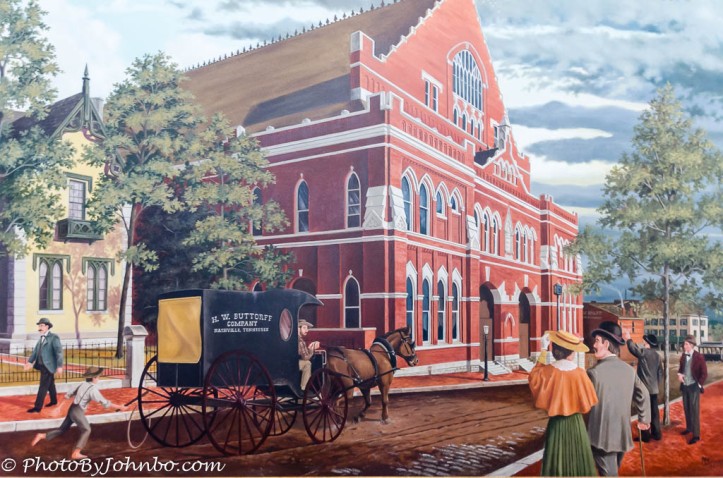
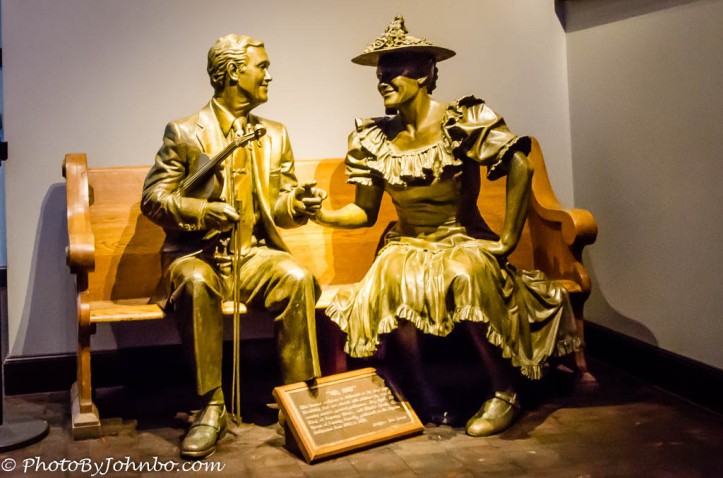









Hahaha oops I took a pic of the house while standing on the stage… Which clearly angered the lady who worked there. Oh well, I didn’t realize there was a “rule”. ‘Eff ’em, I paid their fee, right?